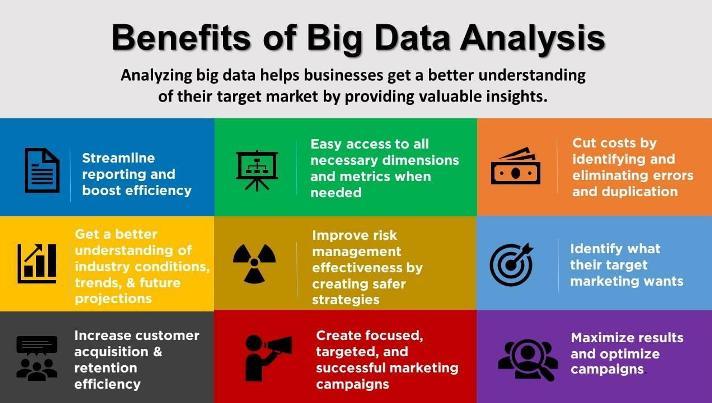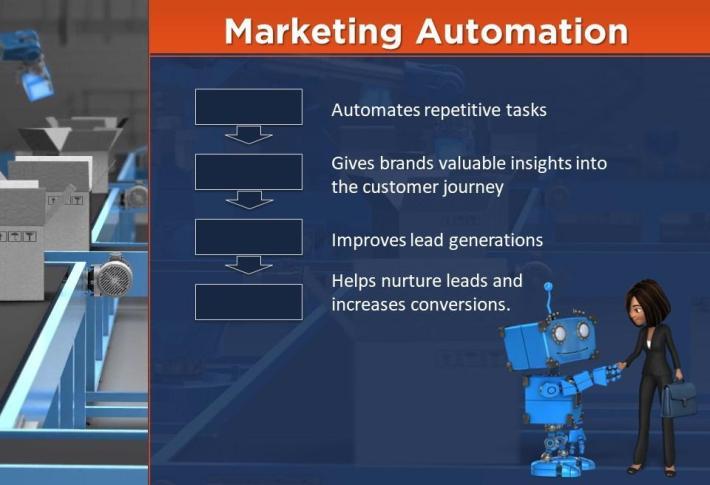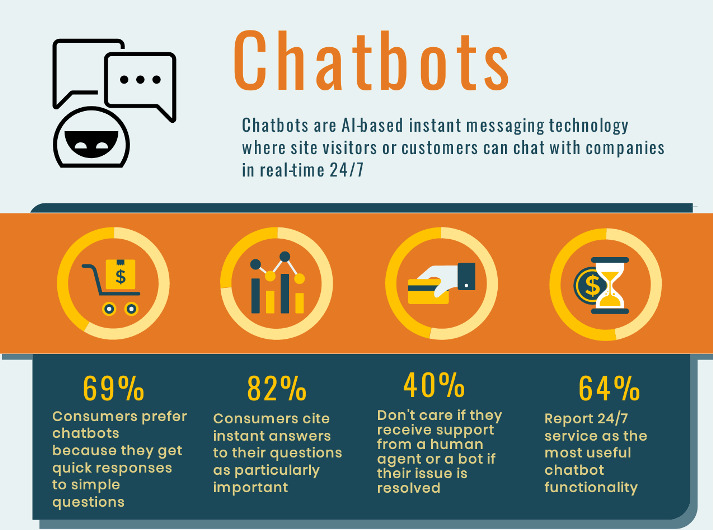Digital marketing strategies and platforms are evolving at an astounding rate requiring all marketers and companies to be creative and innovative to keep up with the trends.
Darwin was right when he said: "It is not the strongest of the species that survives, nor the most intelligent that survives. It is the one that is the most adaptable to change."
If someone asked you ten years ago about online documents, data-driven marketing, artificial intelligence, and voice search optimization, you might have considered the questions to be about science fiction.
Nowadays, these marketing trends top the list of priorities for most businesses. Thus, to remain competitive in today's digital landscape, companies have to adapt to digital marketing advancements and evolving changes.
In our article, we’ve gathered six main trends that will help your business not only survive but also thrive in the digital marketing arena.
#1 Digital Marketing and Sales Materials
Engaging and easily accessible documents have a substantial impact on the effectiveness and success of your digital marketing campaigns.
For many years, PDFs have been the most common format for digital documents; however, they are not always the best. PDFs are static and can quickly lose the attention of your target audience. Also, PDFs must be downloaded, creating an additional barrier to your content, and can be inconvenient.
Thankfully, there are many alternatives to PDFs. For instance, you can use such an online tool as FlippingBook that allows you to create more engaging digital documents by converting PDFs into online flipbooks. Like this one:
Try for free
Digital flipbooks help you provide an excellent reading experience. With tons of information existing out there, a memorable first impression is everything: you grab your readers’ attention right from the start and gain new and loyal clients.
On top of that, such flipbooks are specially designed for showing content at its best on any device, be it desktop, smartphone or tablet. Your clients will enjoy how convenient to read your flipbooks are and will always prefer them to any other formats.
Sign up for a free 14-day trial and create your own flipbook today.
#2 Artificial Intelligence (AI)
Many people think AI is something for the future or only used by the big tech giants. However, most of us encounter and use AI in our daily lives.
Below are just a few of the many ways we are exposed to AI technology daily:
- Behind the social media scenes, the platforms are using AI to personalize your feeds, suggest friends, and show you retargeting ads based on your online behavior.
- Cortana, Siri, Alexa, and other digital voice assistants use AI to generate responses to questions.
- When you use search engines to find answers, products, or services, the engines are using AI-powered processes to respond to your queries.
- Unlocking devices with Face ID technology uses machine learning and AI algorithms.
Map apps such as Google Maps, MapQuest, and Waze are travel aids enabled by artificial intelligence for directions, weather conditions, and real-time traffic. - Amazon, as the largest online retailer, exposes online shoppers to AI regularly. The AI algorithm learns what you like from your previous searches and purchases. It then shows you recommendations in your Amazon feed.
- Marketers use AI-based writing assistants to get consistently great content across every platform.

Benefits of AI
AI technologies may be the future of work, because they enable companies to collect data, analyze it, and apply it in the right place at the right time. There is enormous potential for increasing sales and reaching new customers with AI by enabling businesses to make informed data-driven decisions and improve personalization.
Studies show that over 40% of consumers switched brands due to a lack of personalization and trust. And 43% are more likely to purchase from businesses that personalize the customer experience. The buyers are more informed and have higher expectations for how they interact with brands.
That’s where AI technologies come in handy because they process work by predicting customer experience based on previous behaviors. Businesses can then create, promote content, and send communications to drive conversions.
Gartner predicted that although 90% of brands will use some marketing personalization, most will not optimize personalized content. To improve personalization and produce better content, companies need to use AI technologies. By analyzing data, machine-learning algorithms help offer a highly personalized consumer experience.
#3 Big Data
Companies are inundated daily with vast amounts of data. Big data plays a significant role in digital marketing—it contributes to insights that lead to informed business decisions and strategic initiatives.
Big data is a massive amount of information gathered from a wide variety of sources. Mainly, this information is stored in data centers. There are numerous ways businesses capture data. However, they all boil down to three primary ways:
- Asking customers directly.
- Indirectly tracking customers.
- Acquiring it from other sources and appending it to existing data.
By analyzing the data, brands will gain valuable insights into market conditions, competitive marketing, and consumer behaviors and expectations.
The availability of big data is changing the digital marketing landscape in essential ways. When developing digital marketing campaigns, companies of all sizes use big data technologies to gain a clear understanding of important variables such as who their target market is and what their competitors are doing.
What are the benefits of big data?
Every company's primary goal is to grab the attention of their target audience and convert more leads into paying customers. By analyzing, visualizing, and integrating numerous online data sources at the same time, companies can maximize results and optimize campaigns.

Below are some of the benefits of big data analysis:
- Streamline reporting and boost efficiency.
- Access all necessary dimensions and metrics when needed.
- Cut costs by identifying and eliminating errors and duplication.
- Get a better understanding of industry conditions, trends, and future projections.
- Improve risk management effectiveness by creating safer strategies.
- Identify what your target marketing wants, update existing products, and innovate new ones.
- Increase customer acquisition and retention efficiency by observing consumer patterns and identifying precisely what they want.
- Create focused, targeted, and successful marketing campaigns by monitoring and analyzing customer behavior and trends.
- Businesses define what information they want to get from their data, gain valuable insights based upon their requirements and needs, and develop effective digital marketing plans.
#4 Marketing Automation
Using rule-based personalization and automation, companies will improve the timing and relevance of the emails they send to prospects and customers. Marketing automation techniques revolve around a series of rules. Once triggered, a rule initiates an interaction with a lead or customer.
A practical approach is to use machine learning that can run through multiple consumer data points and establish the best time to make contact. It can also decide which words or subject lines result in the most opens, clicks, and actions.
Applying these insights will help companies improve marketing automation efforts.
How does marketing automation work?
The purpose of marketing automation is to eliminate routine manual labor and enable employees to focus on more complex and creative projects.

Marketing automation software automates repetitive tasks, gives brands valuable insights into the customer journey, improves lead generations, helps nurture leads, and increases conversions.
The marketing automation software market is expected to grow to $6.4 billion by 2024. To understand how marketing automation works, consider the following scenario.
An eCommerce store attracts 15 visitors to a landing page where they register. Registering is the action that triggers the automation software to send out a series of emails to welcome the visitors and confirm their email IDs. Let us say that 9 out of the 15 return to the eCommerce store the next day and add products to their carts. But only 5 of them complete the purchase process and check out.
Automation software tracks consumer behavior and sends out different emails based on that behavior, such as:
- Abandoned cart emails to the 4 customers who put products in their shopping cart but did not complete the purchase.
- Special offer emails to the six shoppers who registered for the eCommerce store but never came back to place an order.
- Confirmation emails with product tracking IDs to the 5 customers who placed orders.
The above example shows how marketing automation software identifies leads, nurtures them, and then closes the sale without manual intervention.
By using different tracking codes to monitor user online behavior, the marketing automation process simplifies workflows by:
- Creating behavior-based market segments.
- Generating, nurturing, and converting quality leads based on priorities known as lead scoring.
- Generating a multi-step automatic workflow process from the first point of contact to closing a sale.
Benefits of marketing automation
Marketing automation helps businesses improve the quality of how leads flow through the buyer journey by:
- Reducing costs by cutting down on the need to pay for resources and staff.
- Identifying problems or issues in the buyer's journey that act as bottlenecks.
- Building long-term relationships with customers.
- Deleting duplicate records, hosting files, and distributing content based on workflow rules resulting in decluttered databases.
- Saving time in various ways including automating repetitive tasks, preparing reports, analyzing data, and scheduling social media posting.
- Making it easier to track and measure marketing campaign performance.
- Nurturing leads to get them to the next stage in the customer journey.
#5 Chatbots
Chatbots are AI-based instant messaging technology where site visitors or customers can chat with companies in real-time 24/7. Studies show that:
- 69% of consumers prefer chatbots because they get quick responses to simple questions.
- 82% of consumers cite instant answers to their questions as particularly important.
- 40% of buyers do not care if they receive support from a human agent or a bot if their issue is resolved.
- Of those surveyed, 64% report that 24/7 service is the most useful chatbot functionality.

Chatbots help businesses save more than $8 billion annually. They offer stellar customer service because they are available anytime, do not lose patience, and have access to a customer's buying history. Businesses use chatbots to handle basic customer service needs and save time and resources. Several major brands successfully use chatbot technology, including Sephora, Staples, and Whole Foods.
#6 Video Marketing
Video marketing is no longer an option. Incorporating video into digital marketing initiatives is a trend that will be around for years to come. So more and more companies start using videos to build brand awareness, increase trust, keep current clients involved, and reach out to potential customers.
What benefits can video bring? There are many of them. To start with, brands that include videos in their marketing strategy see a better ROI than those who do not: impressive 88% of marketers are satisfied with their video marketing ROI on social media. Because videos drive higher engagement than other types of content. Not just on YouTube, but also on Facebook, LinkedIn, Instagram, and websites.
On top of that, Google pushes pages with videos on them higher in the search rankings than those that do not because people find video content compelling. This way, sites that include videos are 50 times more likely to drive organic search results when compared to text only.
Don’t forget that digital video advertising trends are booming as well. Be sure to place your ads in appropriate places so that they are not disruptive and are perceived as genuinely relevant and valuable.
Keeping Up with the Trends
Digital marketing trends, such as digital documents, AI, chatbots and chatbots development, and marketing automation, were once considered beyond the scope of smaller companies. Now, they are essential to success for companies of all sizes.
To survive and prosper in this age of digital transformation, companies must stay on top of the crucial digital marketing trends. Most of the trends are developments as opposed to all-out-changes. This means companies do not need to do a complete overhaul of their digital marketing initiatives. Instead, businesses can adopt a strategic evolution of their digital marketing strategies and how they engage with customers on and offline.
Author's bio:





